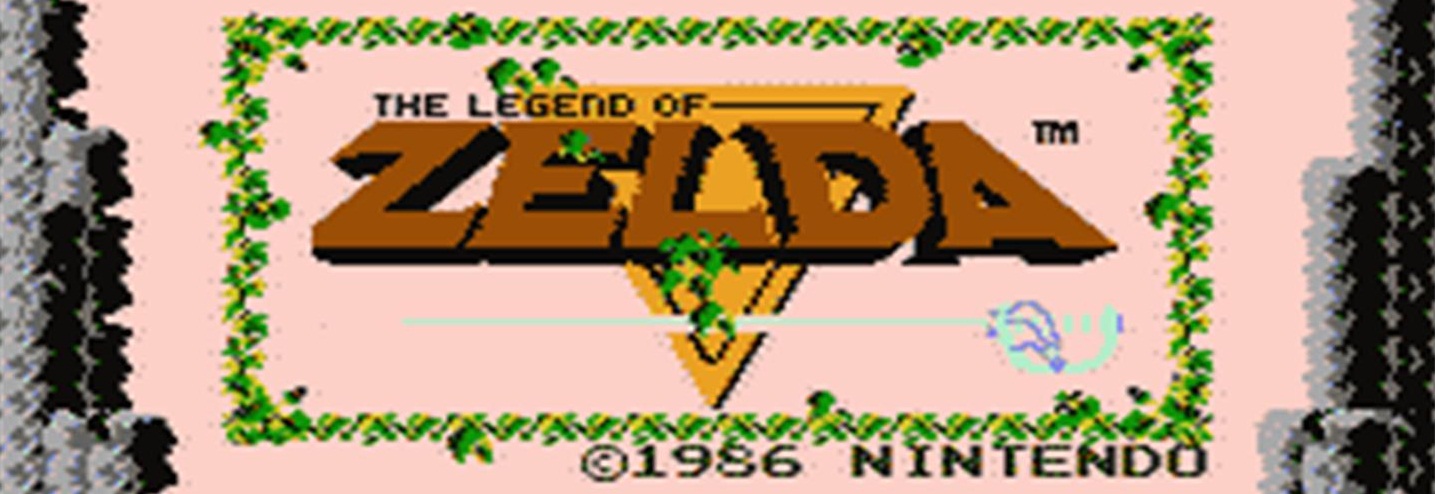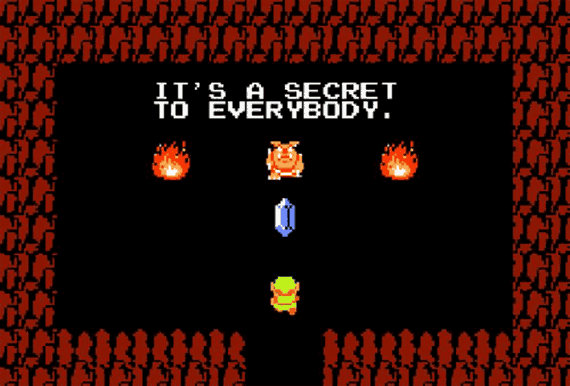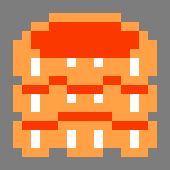 The Legend of Zelda (Retro)
The Legend of Zelda (Retro)
User Review
Product Information:
- Release Date (NA): July 22, 1987
- Publisher: Nintendo
- Genres: Action-Adventure
Game Features:
Single player
Local Multiplayer
Online Multiplayer
Co-operative
Nintendo: a company known for playing a crucial role in the rise of video game media in the West. Although their flagship superstar was Mario, none could be any more vocal than the mute and courageous hero Link, from The Legend of Zelda.
A Hero is Born
______________________________________________________________________________________________________________
One of the most iconic things as a retro gamer to experience was awaiting the package of the next big hit from Nintendo, as gamers all over the world sat at the edge of their seat, waiting to tear apart the cardboard enclosure to reveal the illustrious gold cartridge, with large text that read: "The Legend of Zelda".

Image courtesy of Talesofinterest.net
It is an experience that many gamers, myself included, did not have the luxury to experience, but when we received our gray carts in the mail, the level of euphoria experienced was unmatched, even though the Playstation 1 and Nintendo 64 were the dominant consoles of the time. Over 10 years later, Nintendo re-released the game as a part of their NES Classics line-up for the Gameboy Advance, a drop in the Hyrule Lake that represents the 15+ strong video game franchise and it's success in Japan and abroad. However, what made The Legend of Zelda so good? How did a game like this end up selling over 1 million copies, jump starting the well-known Nintendo Power magazine, and forever changing the view of home consoles all over the world? It is because it was a great game, and as video gamers, we couldn't resist.
Inside the Great Deku Cart
Zelda, as it came to be known, was a new breed of game at the time of it's release. Not many adventure titles had been created, in fact, the most popular titles at the time were Metroid, Castlevania, Super Mario Bros., and Kid Icarus, just to name a few. Thus, when Link hit NTSC television sets in late-1987, North American NES-owners were happy to see this game in their collection. For one thing, Zelda was infamous in it's objectives. Well, actually, the player was almost given no clue of where to go, save for a few hints given here-and-there by hidden merchants, old men residing deep within dungeons with powerful monsters, and sometimes outright guesses! "It's dangerous to go alone, take this" became a staple of the Zelda franchise, sometimes being parodied in other video games that revisited the 8-bit era.

Boy, is he helpful or what. Courtesy of Launchpadmcquack.com
The player had no clue what their next move was, despite the ever-so-helpful title screen roll-by that told the story of Princess Zelda and her capture by the evil lord Ganon. Because of this, the playtime of this game could range anywhere from less than an hour, to over a week, depending on how many times you played the game before (or if you had the guide or not). During his adventure, Link would gain tools, another icon of the Zelda franchise. Items such as Boomerangs, a Raft, Bows and Arrows, and others were found in menacing 5-color dungeons with enemies like the Pols Voice, who exploited the Japan-only Famicom's inclusion of a microphone -- Pols Voices could be slain by speaking into the mic. This was left out of the North American and PAL releases, as the NES lacked a built-in microphone, so the Pols Voice was now weak to Arrows instead. Hidden areas in dungeons could be found by placing bombs at the edge of an area. This was usually guesswork, but if one had the map, it was clear to see areas that looked as if they could be bombed to.

Damn right it is. Courtesy of Zeldadungeon.net
One of the most memorable features of Zelda was the dungeon placement. Early on, dungeons were easily found, as was the case with Level-3. However, with each increment in dungeons, they became increasingly more difficult to find, to the point where the final dungeon, Level-8, was hidden under an incredibly ambiguous tree in the southeast region of the overworld! This was one of the main reasons Nintendo Power became so successful -- Nintendo made it incredibly difficult to know where to go next. This difficulty has been jokingly called Nintendo Hard, but that's another story in and of itself. Rupees are notable in the series for being difficult to amass. Usually, the shield is only obtainable through buying it from a merchant, and can be lost in combat, as is the case with Like-Likes, a creature that has been in many installments of Zelda and are responsible for emptying the pockets of many generations of Links.

Take it from a veteran, kids -- these aren't flying pancakes. Courtesy Cccblog.com
One of the coolest features of Zelda was the second adventure. It was essentially a New Game+, bearing harder enemies, re-ordered dungeons, and more hidden hidden areas (yeah, believe that if you can). In an interview with Toshihiko Nakago, President of Nintendo's SRD department, Takashi Tezuka accidentally programmed only half of the dungeons that Nakago had laid out. After Miyamoto decided the game was fine as-is, Tezuka placed the remaining dungeons in the game's Second Quest mode, which added more replayability, and turned an accident into an accepted gaming practice.
The Bigger Picture
It's scary to think how gaming today would be different if Zelda had not been around. If it wasn't for the original NES classic, Nintendo Power wouldn't have been created. As a matter of fact, it is safe to say that if Zelda had not been developed, Nintendo probably wouldn't have gained such a footing in the West, as Nintendo Power brought in many gamers year after year. The Legend of Zelda has stood the test of time, as a video game that will be remembered for years to come.
Verdict
What I Liked ...
- - Great gameplay mechanics; Simple yet a level of strategy exists
- - Memorable script, as well as sounds
- - Second Quest adds good level of replayability
- - Large overworld increases gameplay time
What I Didn't Like ...
- - Little to no direction given
- - Huge amount of difficulty in finding dungeons and merchants necessary for progression
10
Gameplay
A staple of the franchise, each tool has a purpose and is valuable throughout the game.
10
Presentation
Being an NES game, I can't say much about presentation. They only had so much to work with.
9
Lasting Appeal
Great game to revisit. Second Quest adds another difficulty level. Has stood the test of time as a difficult game .
10
out of 10
Options
View top chatters